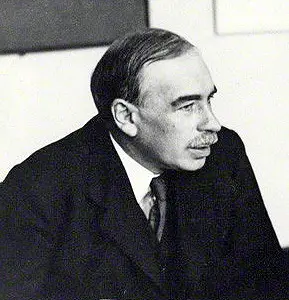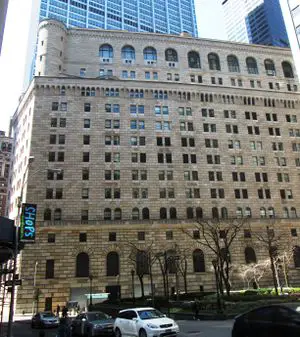How Did Modern Monetary Theory Develop
The idea of money and currency has existed since the dawn of civilization more than 5,000 years ago. Early currencies were somewhat crude and mainly just involved using standardized weights to determine certain commodities' value. The ancient Lydians were the first people to use coins as a form of currency and as a store of value, which was a major step toward money as it is known today.
After the Lydians, silver became the type of metal most people used to mint coins, but gold was always the reserve and “backed” the money. Even after paper money became the norm in the modern period, gold still backed most economies. It was convertible in paper currency, and vice versa, in many countries into the twentieth century. But gold as the standard backing a national currency officially ended when American President Richard Nixon terminated the Bretton Woods financial regime in 1971. From that point forward, historians, economists, and laypeople have repeatedly asked: what is money's value?
Since modern economies are no longer backed by gold, questions concerning what currency represents and its value have led to some diverging and interesting theories. Most economists agree that modern economies operate under the idea of a “fiat currency,” which means that a currency has value because the government minting and printing the money says so. By the 1980s, a group of the world’s leading economists, led by Randall Wray among others, began advocating a theory known as “Modern Monetary Theory” or “Neo-Chartalism” to explain the post-gold economic order.
Modern Monetary Theory is complex, yet at the same time somewhat simple, as it argues several clear points: money’s value comes from the sovereign power that prints it; the sovereign can create money through printing, which is then needed by the citizens to pay taxes; the currency can “float” when it is not fixed to an exchange rate or commodity such as gold, and the default is nearly impossible, but inflation can be a problem. The origins of these ideas dated back to the early twentieth century and were later influenced by notable economist John M. Keynes, who argued that state spending, higher consumption, and low interest rates were needed to keep unemployment low. In the 1980s, economists would take many Keynesian economic ideas and modify them to produce what is today known as Modern Monetary Theory.
Chartalism, Keynes, and the Origins of Modern Monetary Theory
Modern Monetary Theory can be traced back to an early twentieth-century idea known as “chartalism.” German economist Georg Friedrich Knapp first articulated chartalism in papers and finally his 1924 book The State Theory of Money as the idea that fiat money has value because it is needed to pay taxes. [1] Outside of economist circles, chartalism did not gain much traction because most nations were still using gold to back their currencies. But the world wars changed the world’s economic order and how the leaders of nations would come to view the concept of money.
There was no more influential economist in the twentieth century than Englishman John Maynard Keynes (1883-1946). Keynes wrote extensively, taught, invested in numerous enterprises, and worked with Britain and the United States leaders to develop the post-World War II Bretton Woods economic system. Keynes’ influence on post-war economics is extensive, that his name is often used as an adjective – “Keynesian” – to describe government economic policies that he advocated. He wrote about those ideas extensively, but they are perhaps best described in his 1930 book Treatise on Money and his 1936 book General Theory of Employment, Interest, and Money.
Keynes mentioned the term “chartalism” in his works but expanded on the basic idea to include the government’s role in interest rates, employment, and consumption. Arguing that low interest and unemployment rates were the keys to a strong economy, Keynes believed that government spending should be encouraged if need be. Tying a currency to metal was an archaic idea. Keynes argued that “when employment increases, aggregate real income is increased.” [2] Perhaps, more importantly, Keynes further wrote that low levels of employment were the result of higher amounts of consumption (spending) by the people of a particular country. [3]
Many of these ideas were advocated by Knapp and other early Chartists. Still, Keynes took things a step further by reasoning that governments should play a more active role in controlling and lowering interest rates.
“The monetary authority easily controls the short-term rate of interest, both because it is not difficult to produce a conviction that its policy will not greatly change very shortly, and also because the possible loss is small compared with the running yield (unless it is approaching vanishing point). But the long-term rate may be more recalcitrant when once it has fallen to a level which, based on experience and present expectations of future monetary policy, is considered ‘unsafe’ by representative opinion.” [4]
In a somewhat ironic historical turn, although Keynes was theoretically opposed to tying a nation’s currency to the value of gold, he was one of the key architects of the Bretton Woods system, which essentially was the world’s attempt to revive the gold standard. Keynes would have preferred not using gold to determine currency exchange rates but relented due to political pressure. [5] The Bretton Woods system would continue the use of gold as a determination of the value of money, but the foundations for Modern Monetary Theory had poured.
Modern Monetary Theory
After the Bretton Woods system ended in 1971, most industrialized nations’ currencies went from being fixed or “pegged” to gold to the “floating” currency regime that exists today. The value of the U.S. dollar, yen, euro, Canadian dollar and the Australian dollar was valued in terms of their demand domestically and in international markets, which brought forth a new economic reality that left many people struggling to understand.
By the 1980s, a new wave of economists, led by Randall Wray, Paul McCulley, and Stephanie Kelton among others, began to interrupt the post-Bretton Woods world economy through a chartalist and post-Keynesian lens in what became known as “Neo-Chartalism,” but is now known more commonly as “Modern Monetary” or Modern Money Theory” or MMT. The MMT theory/philosophy consciously “builds on the insights” of Keynes, Knapp, and other early twentieth-century chartalist economists. [6]
The core concept of this philosophy is that governments that mint and print their own money, and do not peg it to another currency or commodity, can never be insolvent. These currencies are described as “sovereign currencies” because they derive their value from the sovereign governments that print them.
MMT furthers Knapp’s earlier argument that the tax system gives value to a fiat money system. The sovereign currency is needed to pay taxes, which in turn creates a demand for the currency. [7] Knapp directly influenced the idea of sovereign currency, but other MMT elements are clearly taken from Keynesian economics.
Low interest rates were one of the linchpins of Keynes’ ideas, and they are in MMT as well. The theory holds that low-interest rates drive investment and keep money circulating throughout the economy in a process known as “velocity.” Keynes and MMT proponents believe that central banks should play a direct role in keeping interest rates low through various measures, including money printing, quantitative easing, and purchasing bonds. [8]
MMT adherents also follow Keynes with the idea that not only should the central government play a role in keeping unemployment low, but that low unemployment is more important than controlling inflation. Spending increases consumption, which in turn creates more jobs and higher incomes. [9] Although inflation may result from more government spending and lower interest rates, low unemployment and higher wages means that the population will be able to withstand the price increases better.
Wray has admitted that inflation is certainly a potential problem of following MMT policies. Still, he points out that cases of truly economic crippling “hyperinflation” are sporadic throughout history. Weimar Germany, America during the American Revolution and Zimbabwe are the three best-known cases, which Wray notes were all accompanied by extreme political instability and general bureaucratic incompetence. [10]
Conclusion
In the midst of the Bretton Woods financial system collapse, economists, bankers, financiers, and government leaders scrambled to understand their new economic reality. One of the primary theories developed was the Modern Monetary Theory, which was heavily influenced by chartalist and Keynesian economic theories of the early twentieth century. MMT gradually became the leading economic theory of the industrialized world, although not all economists are necessarily on board.
A notable and influential group of economists led by James Rickards believe that MMT policies could be the death knell of the modern economies by creating unending cycles of deflation and inflation and that gold still has a place in modern economics. Another emerging group of economists believes that MMT places too much emphasis on the idea of money and that the concept of credit has all but replaced money in many countries.
References
- Jump up ↑ Polillo, Simone. “Money, Moral Authority, and the Politics of Creditworthiness.” American Sociological Review 76 (2011) p. 439
- Jump up ↑ Keynes, John Maynard. The General Theory of Employment, Interest, and Money. (Ware, United Kingdom: Wordsworth, 2017), p. 28
- Jump up ↑ Keynes, p. 91
- Jump up ↑ Keynes, p. 176
- Jump up ↑ Conway, Ed. The Summit: Bretton Woods, 1944: J.M. Keynes and the Reshaping of the Global Economy. (London: Pegasus Books, 2014), p. 124
- Jump up ↑ Wray, L. Randall. Modern Money Theory: A Primer on Macroeconomics for Sovereign Monetary Systems. Second Edition. (London: Palgrave Macmillan, 2015), p. 1
- Jump up ↑ Wray, pgs. 49-54
- Jump up ↑ Fontana, Giuseppe. “The Role of Money and Interest Rates in the Theory of Monetary Policy: An Attempt at Perspective.” History of Economic Ideas 19 (2011) pgs. 123-5
- Jump up ↑ Wray, p. 23
- Jump up ↑ Wray, pgs. 258-62


